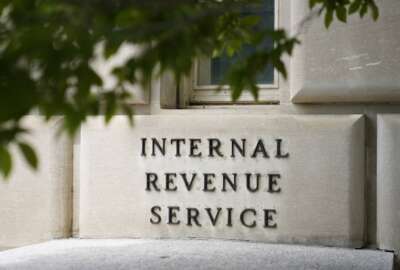New SES evaluation process ‘important step forward,’ expert says
John Palguta, vice president for policy, at the Partnership for Public Service, says the new appraisal process for senior executives is weighted toward obtai...
wfedstaff | April 17, 2015 3:34 pm
By now you know that the Office of Personnel Management has launched a new performance evaluation system for senior executives. John Palguta, vice president for policy at the Partnership for Public Service, says efforts of this type aren’t new, but maybe their time has come.
“Performance appraisal, performance management, trying to get it right has been going on for literally decades in government,” Palguta told The Federal Drive with Tom Temin Tuesday morning. “But I think the confluence of events here for the Senior Executive System is a couple of things. One, for the last couple of years now there’s been a concerted effort by the administration for the senior executive service to get back to the original intent of an executive cadre in government that’s not tied to any one agency but rather is executive leadership for government with an expectation that senior executives will periodically move across agencies, which, for the most part has not happened.”
The second area concerns the expectation that agencies generate results. “Agencies are getting squeezed and they’re only going to be squeezed more tightly going forward on budget matters,” Palguta said. “Every agency is going to really need to focus on ‘OK, we can’t keep doing everything we’ve been doing. Let’s focus on the most important things and let’s make sure we’re getting results.” 
According to Palguta, the new system facilitates the mobility of senior executives from one agency to another by setting up a uniform review process. In the past, different agencies employed different evaluation criteria, some more stringent than others. Since reviews are tied to executive bonuses, an executive working at an agency with a more favorable review process might be reluctant to move to an agency with a less generous one.
“This is one element, the inconsistency in performance appraisals and associated bonuses, and this attempts, at least for that one element, to level the playing field,” Palguta said. “It’s not going to be sufficient, but it’s a necessary step.”
The new policy is built around measuring the executive core qualifications for the SES. Those elements are: leading change, leading people, business acumen and building coalitions. Palguta said that the new appraisal system gives greater weight to the final qualification — results driven. “At a minimum, it’s going to be given 20 percent of the weight toward the rating, and no other element can have more than that,” he said. “And, there’s some fairly rigid criteria in how you get the top rating in ‘results driven.'”
At the beginning of the rating period, executives are required to set specific goals and stretch targets.
“It’s like putting your New Year’s resolutions on a list, but saying ‘And we’re going to check throughout the year and at the end of the year how well you’ve maintained those and how well you’ve met your resolutions,'” Palguta said. “This is a very important step forward for many agencies.”
RELATED STORIES
New SES appraisal system meant to align agencies
Copyright © 2024 Federal News Network. All rights reserved. This website is not intended for users located within the European Economic Area.
Michael O’Connell is senior digital editor of Federal News Network optimizing content for the best user experience. Follow @moconnellWFED
Follow @moconnellWFED






